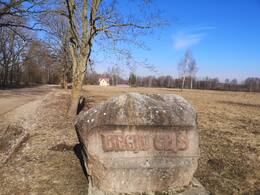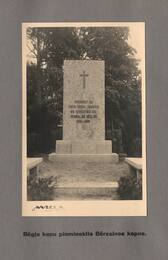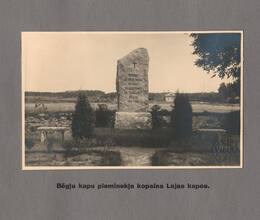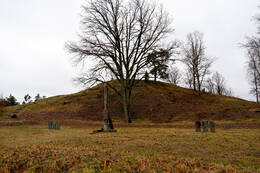WW1 Refugees I World War I, II World War II
April refugees
The first German attack in the region was aimed at Lithuania, reaching Šiauliai. This caused Lithuanians and Jews from Kaunas Governorate to flee towards Semigallia. The first refugees reached the Bauska area on April 17, 1915. The first refugees arrived in Riga via Jelgava on April 18. The city allocated some entry points for the refugees and opened two catering points. The main concerns were taken on by Jewish and Latvian organizations. On April 19, a catering point was opened in the Latvian Society House, feeding about 1,000 people every day. Refugee shelters were set up in the premises of the Latvian school and student fraternity Talavija and Selonija. The flight from Liepāja began on April 21 to the interior of Courland. Refugees from Liepāja and Aizpute counties initially settled in the forests of Valtaiķi, Laidu and Skrunda, hoping for early Russian military successes that would allow them to return home. On April 25, the Germans captured Kuldīga and further attacked Aizpute, thus some of the Kurzeme refugees were returned from the rest of Russian territory and returned home.
July refugees
In the summer, the German offensive in Courland began quickly, and in June the Russian army fled Courland again. The governor and the administrative authorities had already left Jelgava at the end of June. In many places, the soldiers set fire to grain fields and houses, drove away livestock and forced the inhabitants to flee by force. The refugees were ordered to go east. On July 2, a large refugee movement began from the areas around Pampāli, Ezere, Auce, Talsi, Kandava, Tukums and Dobele. Large streams of refugees began to flow through Bauska on July 5, where there were bridges over rivers and roads leading to Koknes and Daugavpils. Another large column headed towards Riga. The total number of refugees at this time could be 300-400,000, who drove millions of cattle, pigs and sheep with them. A line of refugees 20 versts long formed in Jaunjelgava. Food and water shortages began. Some of the refugees remained in the Vidzeme province. The majority of the refugees went to Russia through Vidzeme and Latgale. Latvians were often mistaken for Germans in Russia. Refugees were not allowed to settle in the cities, but were sent further towards Inner Russia and Siberia. The Latvian National Council of Siberia and the Urals was later formed here, representing about 200,000 Latvians. Some of them were colonists who had moved to Siberia already during the time of the tsarist government, which divided the land here.
More information sources
http://pedas.lapamuzejs.lv/?page_id=1180 (accessed 4.11.2021)
https://lv.wikipedia.org/wiki/Pirm%C4%81_pasaules_kara_latvie%C5%A1u_b%C4%93g%C4%BCi (accessed 4.11.2021)
Related timeline
Related objects
Memorial stone "Refugee Path"
Daugmale parish, Kalniņi. On the Ķekava – Jaunjelgava road (P85), on the left side.
During World War I, the so-called Refugee Route ran through Daugmale. In 1915, when German troops entered, refugees from Kurzeme and Zemgale crossed the Daugava to Riga, Vidzeme and Russia. The refugee movement in the Latvian countryside included hundreds of thousands of people. In total, at least 850,000 Latvian residents went on the refugee journey. The exact number of refugees is unknown, because a large part of the refugees was not counted. The refugees went not only to Vidzeme and Latgale, but a large part took a further route to Russia, mainly to its large cities. Along the way, they usually lost all their belongings, including livestock, which either died on the way or were bought by the army for a small fee.
In 1991, the road was marked by a stone by sculptor Viļnis Titāns, placed by the Culture Foundation. It bears the inscription "Refugees' Path", and the stone appears to have the footprints of small bare feet leading away from the houses.
Monument to the First World War Refugees of Kurzeme and Zemgale
Located in the Bērzaine cemetery
Monument to the First World War refugees of Kurzeme and Zemgale.
On February 17, 1933, a refugee committee met in Riga and decided to “operate as a unit under the Cēsis City Parish with the aim of collecting and beautifying refugee grave sites, as well as erecting memorials in the cemeteries of Cēsis and the surrounding area.”
By May 1935, 6,883.20 lats had been donated.
On February 11, 1936, an agreement was reached with sculptor Kārlis Jansons to erect monuments in the Leja and Bērzaine cemeteries. Both monuments were unveiled on June 14, 1936, and they cost 4,600 lats.
In the Bērzaine cemetery, granite steps lead to a mound, where a stele rises above a two-stepped base. The smooth granite surface features a bronze cross, beneath which are the words in bronze letters:
MENTION HERE
REST IN GOD'S PEACE
472 COURZIE AND
REFUGEES FROM ZEMGALE
1915-1918
Monument to the First World War refugees of Kurzeme and Zemgale at the Leja Cemetery
Located in the Lower Cemetery of Cēsis.
A monument to the First World War refugees from Kurzeme and Zemgale is worth visiting.
In the lower cemetery, a roughly hewn granite stela rises above a square base, with a bronze cross at the top. Below it is a message in bronze letters:
MENTION
HERE IN GOD'S PEACE
DURING
96 COURZIE
AND ZEMGALE
REFUGEES
1915-1918
On February 17, 1933, a refugee committee met in Riga and decided to “operate as a unit under the Cēsis City Parish with the aim of collecting and beautifying refugee grave sites, as well as erecting memorials in the cemeteries of Cēsis and the surrounding area.”
By May 1935, 6,883.20 lats had been donated.
On February 11, 1936, an agreement was reached with sculptor Kārlis Jansons to erect monuments in the Leja and Bērzaine cemeteries. Both monuments were unveiled on June 14, 1936, and they cost 4,600 lats.
Girnikai Mound
The mound is located in the Šiauliai district, it is the highest mountain in the district, rising 183.4 m above sea level.
Although there is no direct evidence of the mountain's connection with the Balt culture or its artificial origin, local legend tells that the mountain was built from the corpses of slain enemies by the giant Anculis. Midsummer has been celebrated on the mountain for more than 100 years. On April 24, 1905, to commemorate the anniversary of the lifting of the press ban, a monumental cross was erected on the mountain at the initiative of priest J. Vizbars and with the support of the Counts Pliaterius, which was later destroyed by the Soviet authorities. During the First World War, around 1915, fierce battles took place near the Girnikai Mound, some of the dead, about 240 German soldiers, were buried at its northern foot.
Today, a wooden cross with a memorial plaque and three symbolic concrete crosses stand in memory of those who died in 1914-1918 and are buried here.
Related stories
Memorial sites and burials of Kurzeme and Zemgale refugees in Cēsis
Before the First World War, 2,552 thousand people lived in the territory of Latvia. The census of 1920 registered 1,596 thousand people. This means that during this period the population of Latvia had decreased by 956 thousand people, or by 37.5%.
In the summer of 1915, German troops occupied Courland and Semigallia. More than half a million refugees left their native places in an endless stream. The first refugees arrived in Cēsis in April 1915.
From Ádolfs Ers' book "Vidzeme in the Struggle for Freedom" about the refugees' journey in Valka
Starting from the time of the refugees, Valka was given a more important role than other cities in Vidzeme, because it was home to the politically active newspaper “Līdums”, where Latvia’s spiritual and political weapons were forged, and also because it was a crossroads where roads from three sides of Latvia converged: from Riga, Alūksne, Mozekile, and also from Estonia and Russia. It had connections with refugees from all sides – Tartu, Pliska, Moscow and St. Petersburg. There was a large refugee center here.









